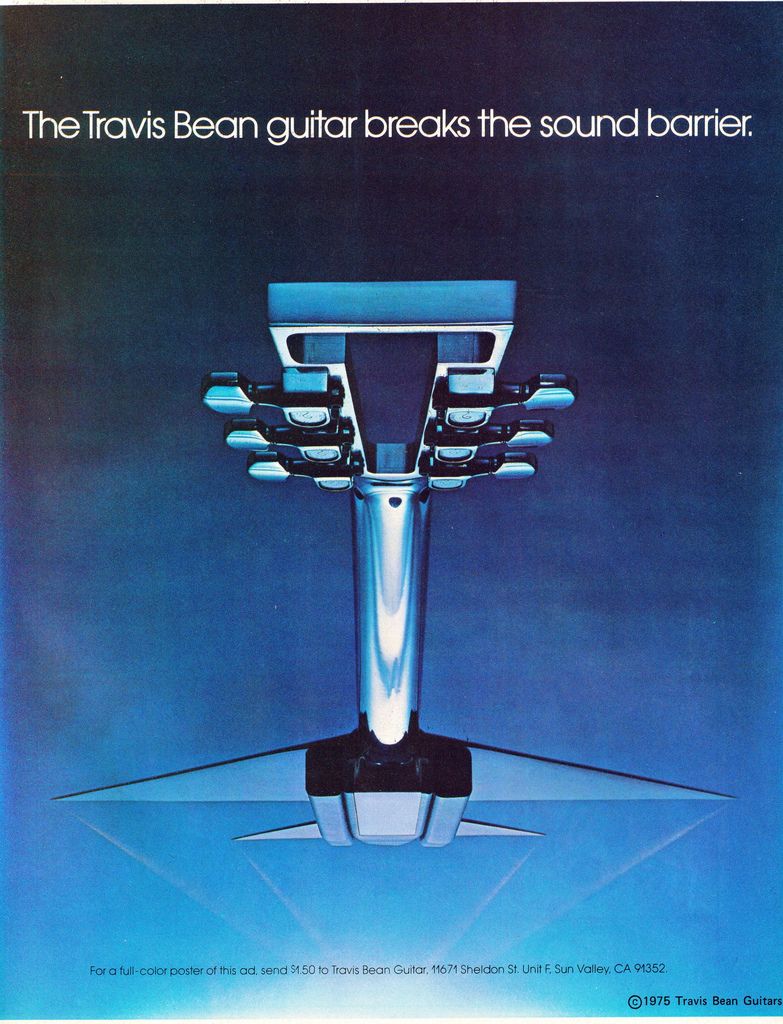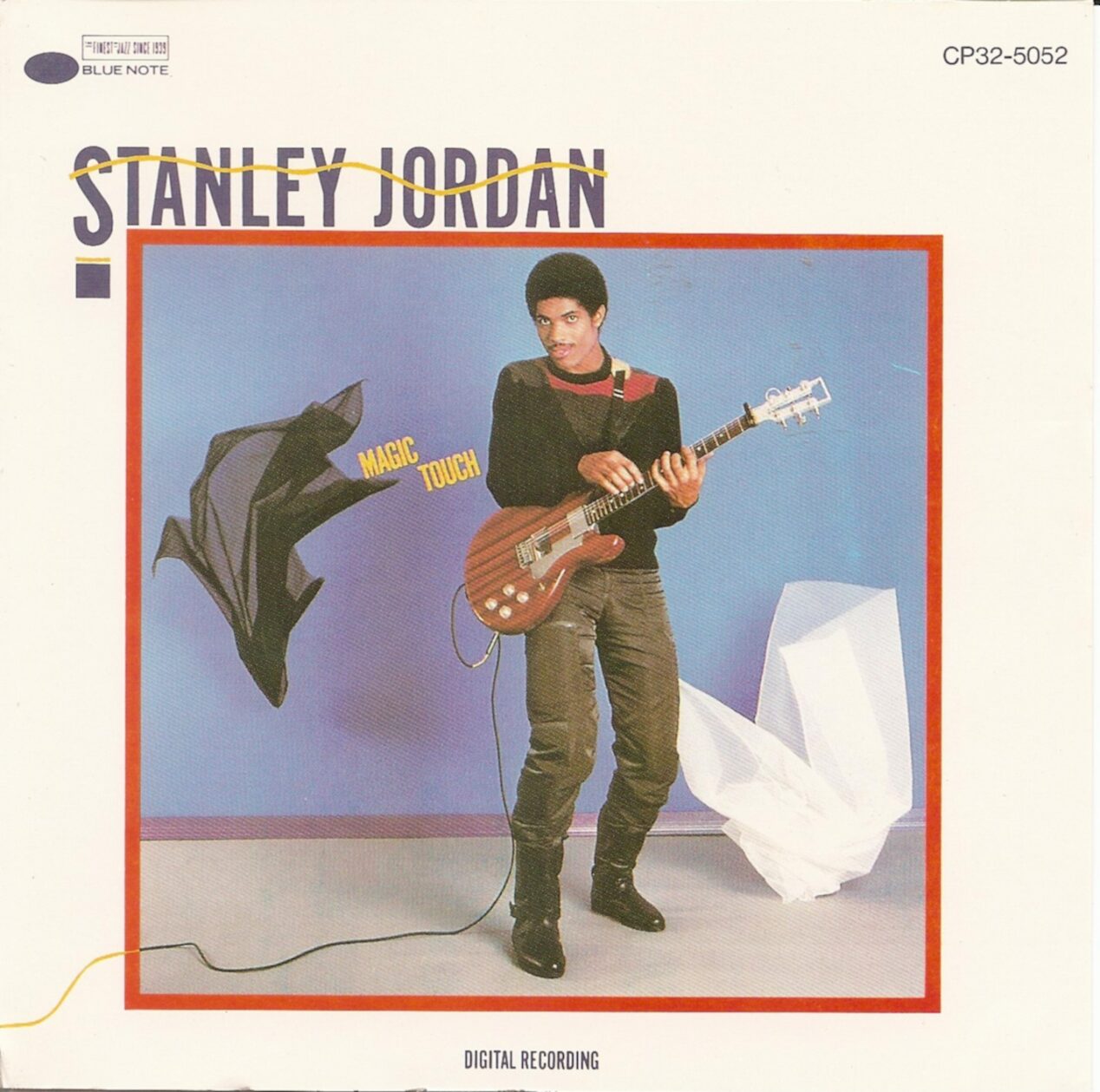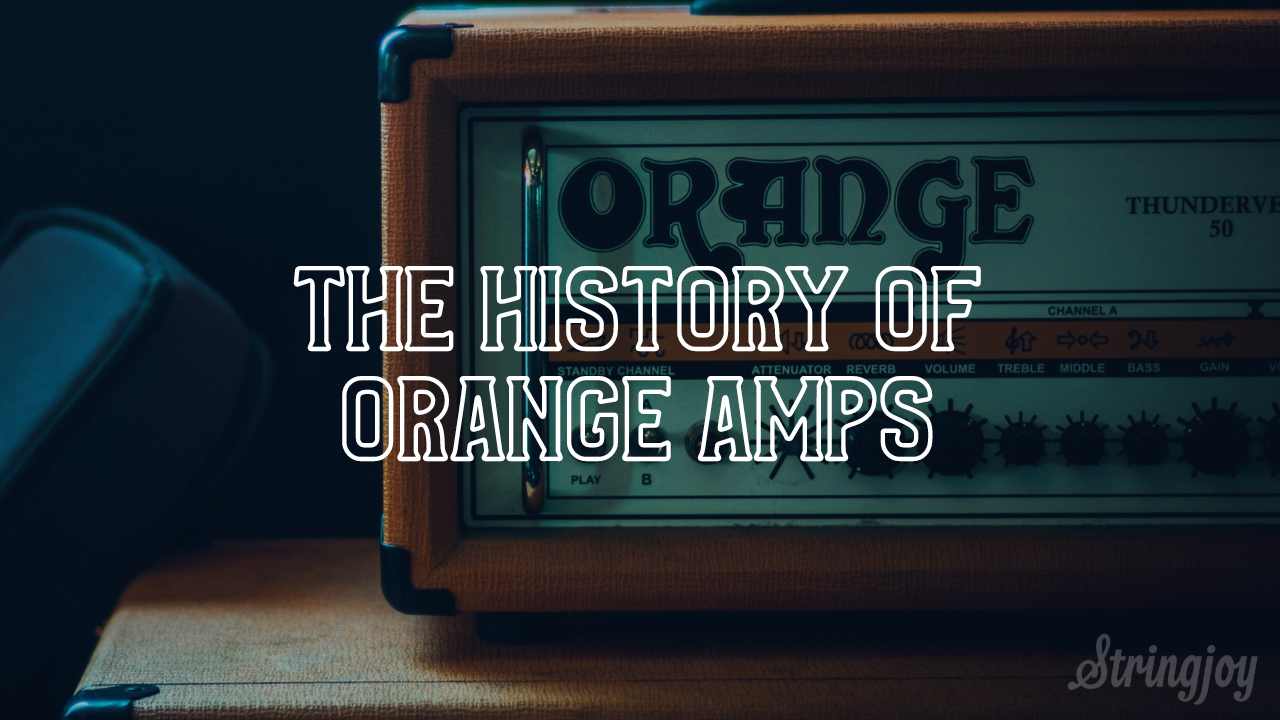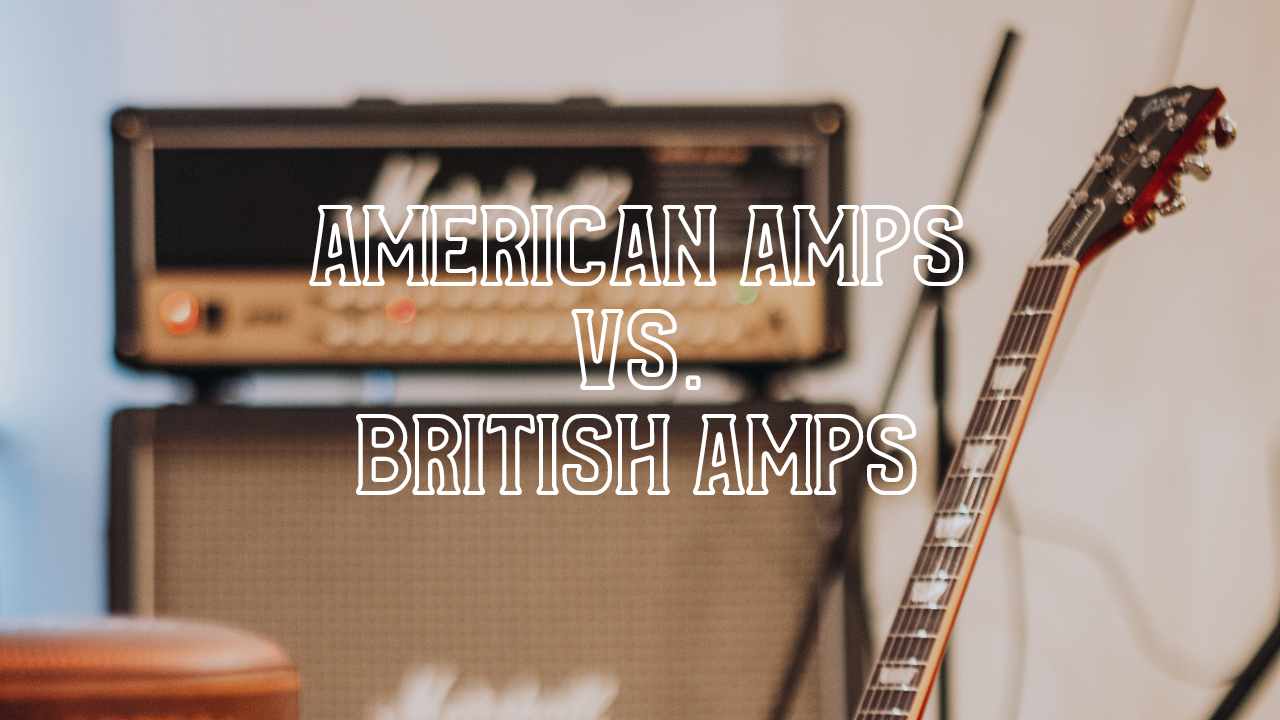Aluminum neck guitars have been around for decades, but they’re still an oddity in the guitar world. Despite being used by countless players over the years like Jerry Garcia, Steve Albini, Brent Hinds, and Stanley Jordan, your chances of seeing one in a shop or on-stage are still slim.
Still, these guitars have a unique draw that seems to pull people in. Between their aluminum necks (and often fretboards), their durability, and unique look, there’s just something about these guitars that you can’t quite get with anything else.
So what’s the story with these guitars? Where did they come from? Why aluminum? What makes them so different from other guitars? Why haven’t they caught on? In today’s article, we’re going to answer all those questions and more. So without further adieu, let’s dive into the history of aluminum neck guitars.
The First Aluminum Guitars
Though you probably think about Travis Beane and Kramer when you hear aluminum neck guitars, they were not the first to do so. The history of aluminum neck guitars actually goes back further than the 60s and 70s.
Aluminum has been used in guitar construction for quite some time. Possibly the first aluminum guitar ever made was the National Resonator. These guitars featured an aluminum body and resonator cone, but their necks were still wood.
The first aluminum neck guitars were actually early lap steels made by Rickenbacker. Known as the frying pan, these were the first solid body electric guitars ever made and also featured aluminum necks. However, these were only lap steels and aren’t really what we think of as aluminum neck guitars.
When it comes to a normal electric guitar with an aluminum neck, the first to do it was an Italian guitar maker named Antonio Wandrè Pioli. Pioli made all sorts of wild looking guitars in the 60s under the name Wandre Guitars, and these guitars were unique in a number of ways.
They had incredibly unique body shapes, funky paint jobs, and all sorts of other odd details. Most notably though, many of these guitars featured aluminum necks. Pioli was making aluminum neck guitars a full decade before Travis Bean would enter the market.
However, these guitars were made in Italy in very small quantities. So it’s no surprise that they never became popular, especially in the United States, and production ended in 1968. That said, the era of aluminum guitars hadn’t even yet begun. Within a few years, there would be multiple aluminum neck guitars on the market.

1970s: The Era of Aluminum
The 1970s was an era of experimentation in the guitar industry. With the guitar being established as a key instrument in rock, pop, jazz, country, and more, people were constantly trying to innovate.
It was a time for trying new things, and aluminum neck guitars are another example of that. In the 70s there were three main makers of aluminum neck guitars—Veleno, Travis Bean, and Kramer. So let’s talk a little bit about each of them.
Veleno
While many think of Travis Bean as the first maker of aluminum guitars, Veleno actually made a guitar entirely out of aluminum before Bean came around. Though this brand isn’t as well known as the other two, Veleno still plays an important role in the history of aluminum guitars.
John Veleno was working as a machinist in Florida in the 60s, making electrical housings out of aluminum for space shuttles. In his free time, he liked to play guitar and gave lessons in the area. In the late 60s, he started doing home projects out of aluminum and eventually got the idea to make an aluminum guitar.
Somewhere between 1966 and 1967, he made his first aluminum guitar. Unlike most of the other aluminum neck guitars, this guitar was entirely aluminum—including the body. They had a Strat profile neck made from a single piece of aluminum, and the body consisted of two hollow pieces joined in the center with screws in the bridge and neck. For some reason though, he never did anything with the guitar and let it gather dust.
A few years later, a friend encouraged him to show his guitar off. Veleno decided to show it off locally and let some people play it. Eventually it ended up in the hands of Carlos Santana’s brother, Jorge Santana. He said the headstock should be a Gibson 3×3 style instead of the Fender 6×1 style, but loved the guitar otherwise.
In the early 70s, Vereno decided to make more and sell them as a side job. They ended up being played by some pretty big names too, including Eric Clapton, Ace Freehly, and John Lennon. He only made a couple hundred guitars between 1970 and 1977 before stopping production, making them incredibly collectible today.

Travis Bean
The most iconic of all the aluminum neck guitars is without a doubt the Travis Bean. When most people think of an aluminum guitar, a Travis Bean is what comes to mind. And Travis Bean’s story starts much like Veleno’s, with a man inexperienced at guitar manufacturing.
Clifford Travis Bean was a motorcycle enthusiast who also had a passion for metal sculpting. He eventually got into music as well, working at a guitar shop in the early 70s. He befriended the store’s repairman, Marc McElwee. Bean quickly realized that wooden guitar necks caused a lot of issues and took up much of McElwee’s time, and the gears started turning.
He wondered if a metal neck would prevent all the problems inherent to wooden necks such as warping and cracking. Though most people with more experience would immediately have laughed at the idea, Bean was inexperienced and didn’t know about the strong feelings many guitarists have towards wood and why they’d think it was a bad idea.
By 1974, Beane was ready to start his guitar company. He had saved up enough and decided to partner with McElwee. He also partnered with Gary Kramer (the soon-to-be founder of Kramer Guitars), who had helped him get his current job at a car dealership.
Unlike Veleno, Travis Bean’s guitars were not entirely aluminum. They had what Bean called a “neck and receiver assembly.” The headstock and neck was made from a solid block of aluminum that extended partially into the body. This allowed for the bridge and pickups to be mounted directly into the aluminum, while also having a wood body that looked and felt more like a traditional guitar.
Bean sold a variety of models in 1974, including two with humbuckers (one with a flat top and the other with a carved top), plus a bass. Later on they would add the now iconic wedge shaped guitar and bass, as well as a single coil model that was more affordable.
In 1975, Gary Kramer parted ways with Travis Bean and founded Kramer guitars, who would also go on to make aluminum neck guitars. Bean continued making guitars until 1979, making under 4,000 instruments throughout the entire run. He later made a small number of guitars in the 90s, but his attempt to get the company going again never panned out.
Kramer
Though Travis Bean was defunct by 1979, Kramer continued to carry the aluminum neck guitar torch. Starting production in 1976 after leaving Travis Bean, Kramer started making and selling aluminum neck guitars of their own.
Like Travis Bean’s, these guitars featured an aluminum neck and headstock. The headstock in particular is a unique design, looking like a tuning fork. The main difference between these guitars and Travis Bean’s though is the neck. Instead of being a solid block of aluminum, Kramer decided to add wood inserts. This was to help with weight and feel, as well as the issue of aluminum necks feeling cold. At their core though, these guitars were incredibly similar to Travis Bean’s.
In 1981, Kramer introduced some more traditional wood neck guitars. The exact reasons for this are unknown, but it’s speculated this was due to Kramer being inspired by Charvel and their Fender-like instruments. And by 1982, Kramer had stopped making aluminum neck guitars, marking the end of an era for an incredibly unique style of guitar.

The Good, Bad, and Ugly of Aluminum Neck Guitars
We’ve talked a lot about the history, but what about the guitars themselves? What made these guitars special enough to be used by the likes of Jerry Garcia and Stanley Jordan? And what prevented these guitars from sticking around as mainstays in the industry?
First, the good. As you’d expect, aluminum neck guitars are incredibly durable. Aluminum isn’t going to warp or break. These guitars can take a beating on tour with essentially no damage. They don’t need a truss rod either, which eliminates that issue entirely. If they get scratched, you can easily polish it out. Their durability is one of Steve Albini’s main reasons for using them.
As for tone, aluminum guitars have their own unique sound. Many say that they sound more bright and clear than regular guitars, which is why Jerry Garcia was a fan. If you’ve ever heard one played live by someone like Garcia, John Mayer, or Stanley Jordan, you know the sort of pristine, sparkling cleans these guitars are capable of.
They also are said to resonate more strongly and for longer than regular guitars. Because the necks are aluminum, you can feel the strings resonating more strongly. They also have incredible sustain, again due to their aluminum construction.
Now, the bad. Though aluminum guitars have lots of pros, they certainly have cons as well. One of the biggest issues was how they reacted to temperature changes. Because wood and aluminum shrink and expand at different rates, aluminum neck guitars can be difficult to keep in tune when temperatures are changing. This is one of the reasons cited by Garcia for switching back to wood necks.
Another common complaint was the feel. Aluminum necks almost always feel cold, and this is amplified if they have an aluminum fretboard as well (like many offerings from the Electrical Guitar Company). That said, aluminum fretboards in particular are also said to be incredibly smooth and glassy, so it’s a trade off.
Weight and balance are also issues. As you’d guess, the aluminum necks make them quite heavy. And because most of that weight is in the neck, the balance can be less than optimal.
Though there are a lot of positives about aluminum neck guitars, the negatives are likely what held them back. Despite their durability and stunning sound, their tuning issues, weight, and non-wood feel ultimately prevented them from becoming widespread. Thankfully for the fans though, aluminum guitars have had a comeback.

Modern Aluminum Neck Guitars
Despite all the issues mentioned above, aluminum guitars earned a cult following over the years. With folks like Lee Ronaldo, Steve Albini, and Buzz Osborne continuing to use them well after their production ended, they earned a solid fanbase. And this eventually led to a modern comeback for aluminum guitars.
Kramer actually briefly brought back aluminum necks in the mid 90s, but that only lasted until the early 2000s. However, there are a few manufacturers making aluminum neck guitars today. The two most notable are Electrical Guitar Company (EGC) and Aluminati Guitars.
EGC was founded in 2003 by Kevin Burkett. They make a wide variety of aluminum neck guitars in the the style of Travis Bean and Kramer, being used by people such as Brent Hinds and Buzz Osborne. In 2014, they started making reissues of Travis Bean guitars. EGC only makes guitars in limited quantities, but they have a solid business catering to the fans of aluminum neck guitars.
Aluminati Guitars was founded in 2009 with a goal “to make the best sounding instrument on the planet.” They make a wide variety of aluminum neck guitars with high quality materials and a focus on making very practical guitars that sound incredible. They also make an all aluminum guitar reminiscent of Veleno’s original. And like EGC, they make their instruments in small quantities focusing on aluminum neck devotees.
Though aluminum neck guitars nearly died out in the 80s, they are still alive and well today. They may only be made in small quantities, but these guitars keep the aluminum neck concept alive and cater to those who want an aluminum neck guitar without spending thousands on a vintage Travis Bean.
The History Behind the Aluminum
Aluminum neck guitars aren’t common these days, but they still have a unique place in guitar history. Starting out as the idea of a few inexperienced designers, these guitars ended up hitting the market and earning a cult following. Despite that, they just didn’t sell well enough, and both of the main manufacturers had stopped making them by the early 80s.
However, these guitars still have their fans, driving up prices of vintage Travis Beans and Kramers. And thankfully, multiple manufacturers have stepped in to keep the aluminum neck alive. So don’t be afraid to give an aluminum neck guitar a shot; you might just love it. And be sure to put on a fresh set of Stringjoys for the best tone possible.








2 Responses
Ovation also made guitars under the Applause label with aluminum necks. I have one in my stable.
thanks for the information.
you missed valco national electric bolero guitar has an aluminum core in the neck filled with plaster and covered in wood.
in 1950s
very different designs.